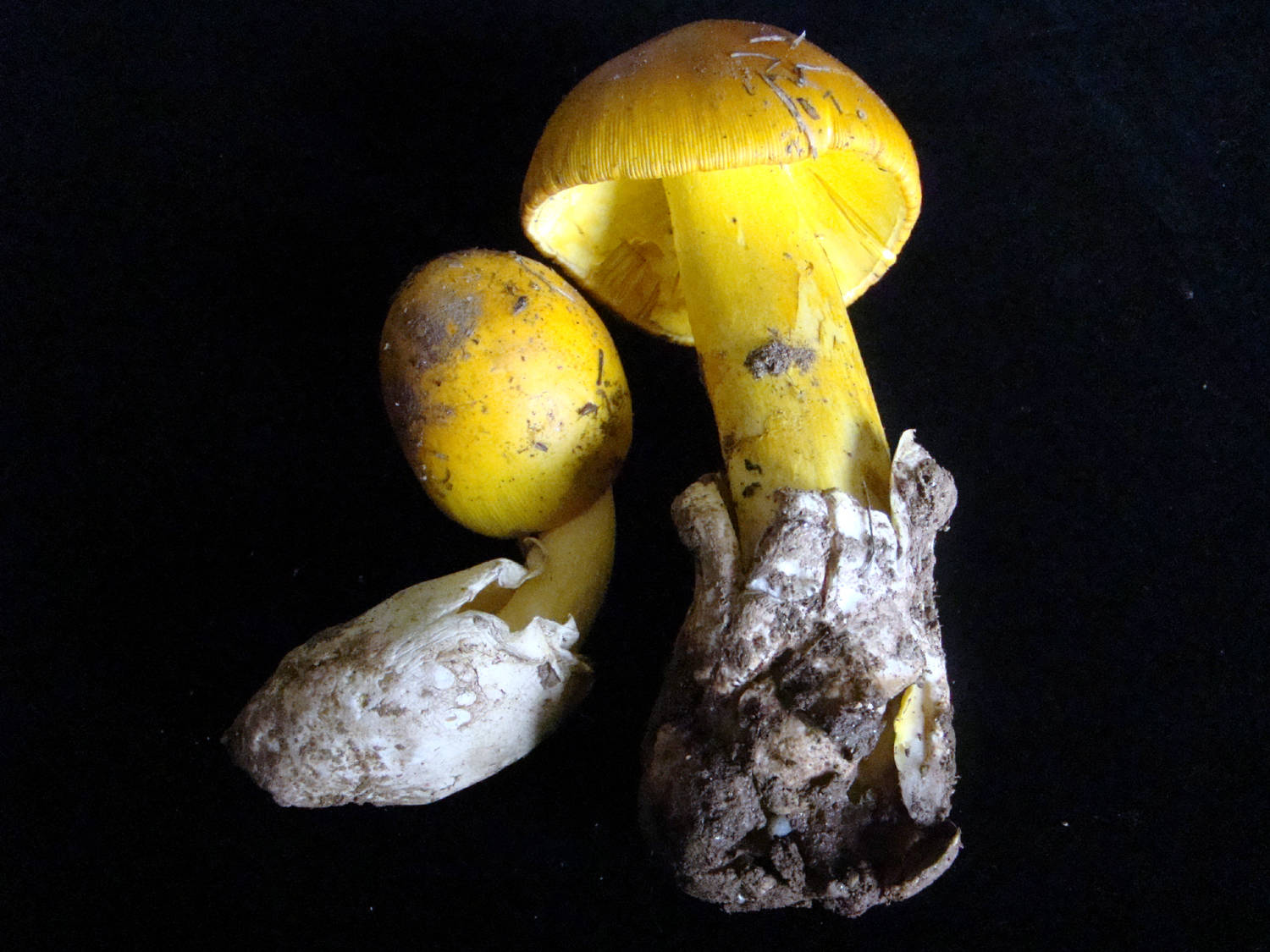
Local Name: Gongsey Shamong
Edibility: Edible
Habitat: Terrestrial and solitary to gregarious.
Description: Cap: 5-19 cm wide, bright orange-red to a duller orange, often becoming more or less paler at maturity, hemispherical then plano-convex, smooth, shiny, somewhat viscid, with a rather short-striate margin. Hymenophore: Free gills, close, yellow, sometimes forked at the margin, with a subflocculose margin. Stem: 6-13 cm tall and 1-3 cm wide, cylindrical or enlarging downward, yellow, smooth below the ring, and slightly striated above. The ring is ample, thick, membranous, yellow, slightly striated on the upper side, felted on the lower side. Volva: Up to 6 cm tall, connected to the stem only at the base, membranous, white on the outer surface, white or tinted orange on the inner surface except at the point of contact with the stem where it is yellow. Flesh: White, yellow just below the cap skin, and 20 mm thick above the stem. Spore Print: Creamy white.
Comments: Amanita caesarea and its relatives Amanita hemibapha and Amanita jacksonii are among the relatively few widely-consumed edible Amanita species. The genus Amanita is better known for its poisonous members like the death angels (Amanitavirosa, A. bisporigera, A. verna), the destroying angel or death cap (A. phalloides) and the hallucinogenic and toxic fly agaric (A. muscaria).



